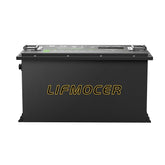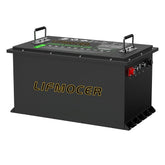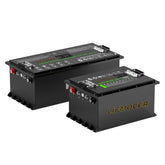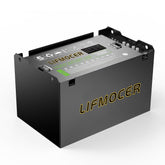Portable Power Banks vs. Car Jump Starters: What’s the Difference?
As portable electronics and vehicle electronics become more integrated into our daily lives, two types of backup power devices are becoming more and more popular: portable power bank and car jump starters. While they may seem similar at first glance, their uses are quite different. Understanding their differences will help you choose the right product for your specific needs.
Understanding Portable Power Banks
Portable power bank is designed to replenish power for low-power electronic devices such as smartphones, tablets, Bluetooth headsets, digital cameras, etc. It generally adopts USB-A or USB-C interface and built-in lithium-ion batteries.
The advantages of these devices are that they are slim and lightweight, and can be stowed in a pocket or backpack compartment with one hand to meet the demand for replenishment of power for daily commuting and short-distance traveling. However, due to the specifications of the battery cell and the protection circuit, the instantaneous output current is much lower than the peak power required to start the vehicle, so it cannot replace the emergency car starter.

What Are Car Jump Starters?
Car jump starters are vehicle-specific portable power devices that provide instantaneous high current to help start a vehicle quickly when the battery is in deficit. Today's lithium battery jump starters are compact, often with USB ports and lighting, but emergency starting for cars, trucks, motorcycles and even boats is still their primary role.
Li-ion battery jump starters are more portable than traditional jumper cables that rely on other vehicles, and are safer and more reliable thanks to their high-capacity batteries and multiple safety protection mechanisms.
Key Differences Between Power Banks and Jump Starters
Power Output and Voltage
The most obvious difference between powerbank and car battery jump starter is reflected in the voltage and power output. General power banks through the USB port output 5V voltage, very suitable for smart phones, tablets, Bluetooth headsets, cameras and other small electronic devices charging, but this low voltage can not start the car engine.
Portable jump starters, on the other hand, have a much higher output voltage, usually 12V, some even up to 15V, specifically designed to match the voltage requirements of car batteries. It is this high output capability that allows it to provide the current needed to start a lossy trolley, which is something that ordinary power bank can't do.
Battery Capacity and Cranking Power
The battery capacity of a powerbank supply is usually measured in milliampere-hours (mAh), which represents the amount of power that can be stored and released by the device over a given period of time. While the capacity may be as high as 10,000 to 30,000 mAh, it is primarily designed for slow and steady charging of small devices.
On the other hand, the capacity of a portable car jump starter supply may also be expressed in mAh, but more critically it will be labeled as start-up power or peak current. Starting power refers to the peak current it can deliver to start an engine, such as a power supply with a peak current of 1,000-2,000 amps, which will quickly start most cars and light trucks. This kind of instant power capability is critical and is far beyond the reach of ordinary power bank supplies.
Safety Features and Built-In Protections
Power bank is generally equipped with basic protection such as overcharge, short circuit and temperature control to ensure the safety of charging small devices.
Car jump starters are equipped with more complete protection due to higher voltage and current output: reverse connection protection, anti-short circuit, over-voltage limitation and intelligent temperature control, which not only protects the operator's safety, but also protects the vehicle's circuit.

Head-to-Head Comparison
| Feature | Portable Power Bank | Car Jump Starter |
|---|---|---|
| Primary Function | Charge mobile devices (phones, tablets) | Jump-start a vehicle battery |
| Battery Capacity | 5,000 – 20,000 mAh | 10,000 – 30,000 mAh |
| Output Voltage/Current | 5V/2A (USB) | 12V/400A–3000A (peak current) |
| Device Ports | USB-A, USB-C | USB, DC, jump start clamps |
| Use Cases | Daily charging for electronics | Emergency car battery boosting |
| Weight & Size | Light and compact | Heavier and slightly larger |
| Safety Features | Over-voltage protection | Reverse polarity, overcurrent, spark protection |
Can a Car Jump Starter Be Used as a Power Bank?
Yes! Most modern lithium jump starters are hybrid devices, often with a USB output and flashlight function, which, in addition to starting your vehicle, allows you to charge electronic devices on the go. But the reverse is not true: a standard power bank supply cannot start a car because it does not have the necessary peak current output and jumper cables.
Which One Should You Choose?
It depends on your needs:
- Only for commuting or business trips to replenish the power of cell phones and tablets. — Ordinary powerbank can be sufficient - lighter, cheaper, and can be carried in your pocket.
- If you drive frequently, especially in cold weather or remote areas. — a car jump starter is a lifesaver. It can usually be used as a high-capacity charging treasure, the critical moment and can instantly start the vehicle, but also comes with lighting, inflatable and other functions, eliminating the need to wait for the trouble of rescue.
Conclusion
Despite the similarity in form between portable power banks and auto jump starters, there are essential differences in their core functionality. Jump starter pack ply is designed for sudden vehicle failure, with the key ability to provide a high rate of instantaneous current to start the engine, is the driver to deal with road emergencies professional protection tools. For those seeking safety on the road and versatile emergency preparedness, investing in a lithium car battery jump starter is a clear functional necessity.
In contrast, the core value of a portable power bank is to provide daily power replenishment for small electronic devices such as smartphones and tablets. Its circuit topology and core specifications cannot meet the high-current load requirements needed for vehicle startup, so it is not applicable in vehicle failure scenarios and should not be considered a reliable emergency solution.
FAQ
Can I use a portable power bank to jump-start my car?
No. Regular power banks cannot start a car, but car jump starters are reliable solution. When purchasing, you should pay attention to choosing a model that matches the vehicle's displacement, and purchase through formal channels to ensure safety and reliability.
Can a car jump starter charge my phone?
Yes. Most lithium jump starters come with USB ports that allow you to charge smartphones, tablets, and other small electronics.
Are car jump starters safe to carry in the car?
Yes.modern lithium battery starters are equipped with built-in safety protection mechanisms with overcurrent protection, reverse polarity protection, and overcharge protection, so they are safe to carry and store on a daily basis.















